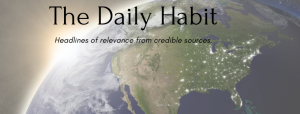LatinaLista — Quiz: Name the two highest-grossing illicit businesses in the world.
If you said the first profitable illicit business was drugs, you were right. If you said the second illicit business that paid well was prostitution, you are only partly right.
When prostitution is performed by women and girls who are forced to do it against their will, then prostitution becomes part of a much bigger issue — human trafficking. Sexual exploitation comprises the majority offense in human trafficking.

Human trafficking is the second largest illicit business in the world after drugs and generates an estimated 32 billion dollars annually according to the United Nations.
Trafficking is defined as the recruitment, harboring, transportation, provision, or obtaining of a person for labor or services through the use of force, fraud, or coercion, for the purpose of subjecting that person to involuntary servitude, sexual exploitation, peonage, debt bondage, slavery, or other forms of exploitation.
It is a problem that doesn’t get the attention it deserves but the debut this week of the United Nation’s newest Goodwill Ambassador to Combat Human Trafficking may be able to paint a whole new picture of the issue.
American painter Ross Bleckner plans on using his expertise in art to help rehabilitate child victims of human trafficking. He is the first artist to be appointed an UN Goodwill Ambassador for human trafficking. In fact, as part of his official debut at the UN headquarters in New York last night, an exhibition created by Bleckner featuring 200 paintings created by former child soldiers and abducted girls from Gulu, Uganda was showcased.
Bleckner had spent several weeks with the rescued children in creating the art that was sold to benefit more rehabilitation programs for these young victims.
In some parts of the world, children comprise the majority of human trafficking victims. Yet, while convictions for human trafficking are rising, two out of five countries surveyed by the United Nations Office on Drugs and Crime had not recorded one conviction.
While human trafficking is modern-day slavery, it’s disgustingly ironic that in 30 percent of the countries surveyed by UNODC in their Global Report on Trafficking in Person, the majority of traffickers are women.
To help elevate the profile of this seriously increasing problem, UNODC has created the Blue Heart campaign and today at the UN, a thematic discussion was held with international members to discuss how to improve the global coordination of catching those guilty of trafficking in humans.
With so many women and children being transported from Mexico and points farther south into the United States, it’s estimated that more than 17,000 are trafficked into the United States each year — and it just keeps getting worse.
It’s time to join forces with the global community in setting consistent punitive measures against traffickers and providing the kind of rehabilitation and therapy needed by its victims.
Human trafficking doesn’t just destroy vulnerable lives — it creates profit off the backs of those victimized.


